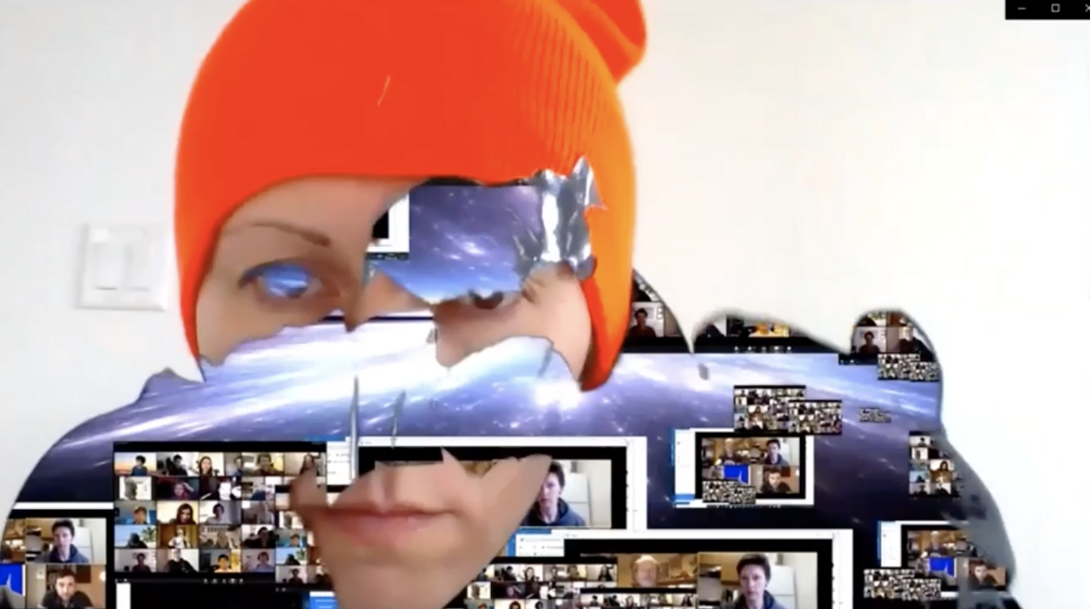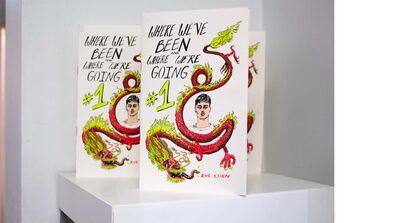
Exploring the Power of Virtual Reality in a Newly Virtual World

The course Mixed Reality Performance, taught by Associate Professor of Performance Mark Jeffery and Associate Professor of Art and Technology Studies Judd Morrissey, has always blurred the lines between virtual and physical spaces. In this cross-disciplinary course, students create video performance pieces that incorporate augmented reality, using technology to add digital objects, backgrounds, and characters to their work. But when the pandemic required Jeffery and Morrissey to teach remotely, they had to imagine how a course focused on the interplay between these two worlds could exist in a fully digital space.
One of the first things that they considered was where students were. Not just what tools they had access to and what spaces they had to create their art, but where they were mentally. “We integrated breathing practices to center ourselves and acknowledge our lungs,” said Morrissey. These exercises helped students find calm during a time of great upheaval and also served as inspiration for new pieces.
When it came to the performance pieces themselves, Jeffery and Morrissey encouraged students to investigate confined spaces. They wanted their class to see their current circumstances not as a barrier to art-making, but as an opportunity. “We had students download ready-made augmented reality apps to create scenes and stages in the homes,” said Jeffery. They had discussions about how to find meaning in spaces that can often seem mundane or overly familiar. Using different technologies, they transformed their homes, making their apartment a dance club or making it appear as if a T-Rex is at their front door.
Easy access to tools was also an important factor in structuring an inclusive syllabus. Jeffery and Morrissey encouraged students to use accessible resources like the School’s Video Data Bank, Visiting Artists Program, Joan Flasch Artists' Book Collection, Library resources, and video sites like Vimeo. To replicate some of the on-campus experiences students were missing, they also had students attend a Zoom workshop from Berlin-based artist Brody Condon, hosted by Assistant Professor Kristin McWharter, where they lectured on the role of immersive role-playing in virtual and augmented reality.
For their final project, students presented ten-minute performances via Zoom, using the various tools they had experimented with over the term. Though typically these final projects are viewed in person, Zoom seemed fitting for the class. “We’re excavating the possibilities of Zoom as a collective performance environment,” Morrissey said. Shot from their bedrooms and basements, hundreds of miles apart, students’ final pieces are a true testament to the moment they were created. “They each took such diverse approaches in how they used their screens,” Jeffery said. “Students always teach you, and in our last five weeks with this class, this was always present.”
